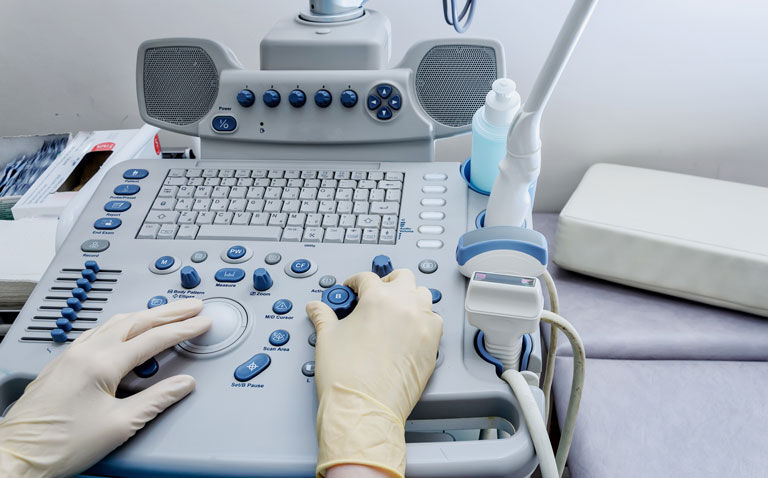POC ultrasound is a valuable tool to help emergency department clinicians identify testicular torsion in the paediatric population
Point-of-care ultrasound (POC ultrasound) has a high sensitivity and specificity for the identification of testicular torsion in paediatric patients within an emergency care setting. This was the conclusion of a systematic review and meta-analysis of studies by Japanese researchers from Tokyo, Japan.
Testicular torsion is defined as the rotation of the longitudinal axis of the spermatic cord, resulting in the absence of testicular blood flow. The estimated annual incidence of the condition among those younger than 18 years is 3.8 per 100,000 with a mean age of 10.6 years at presentation. Common symptoms include acute scrotum pain, erythema and scrotal swelling.
It has been suggested that a scoring system based on testicular swelling, a hard testicle, an absent cremasteric reflex, nausea/vomiting and high riding testis, can potentially diagnose or rule out testicular torsion in 80% of cases.
POC ultrasound use within an emergency department in children with suspected acute appendicitis has been shown to be diagnostic. Moreover, although ultrasound has been found to be an effective imaging modality for diagnosing testicular torsion in adult patients with acute scrotal pain, the diagnostic accuracy of POC ultrasound for testicular torsion in children has not been fully assessed.
In the current study, the Japanese team undertook a meta-analysis of studies in children (under 19 years of age) who presented at an emergency department with symptoms suggestive of an acute scrotum.
The researchers included any studies which used POC ultrasound but excluded both case studies and case series with less than 10 patients. The primary outcome was an assessment of the diagnostic accuracy of POC ultrasound for paediatric testicular torsion based on sensitivity and specificity.
POC ultrasound and testicular torsion
A total of four studies including 784 patients were included in the analysis. The median age of children in the four studies ranged from 10 to 13 (although it was not reported in one study).
Among the 4 studies, testicular torsion was identified via POC ultrasound in 205 patients although 3 of these were found to be false positives.
The pooled sensitivity was 98.4% (95% CI 88.5 – 99.8%) and the specificity was 97.2% (95% CI 87.2 – 99.4%). The overall false positive rate was 2.8% (95% CI 0.6 – 12.8) and the positive predictive value (i.e., the probability that an individual has the condition) was 84.9%.
Based on their analysis, the researched felt that POC ultrasound had the potential to allow clinicians to diagnose testicular torsion rapidly and safely. They added that children with a positive result should undergo immediate exploratory surgery. However, an important caveat from their analysis was how the quality of the available evidence was only moderate because of a high risk of bias and heterogeneity.
The authors concluded that although POC ultrasound appeared to be able to accurately diagnose testicular torsion, prior to implementing such as recommendation, prospective studies were required to clarify the accuracy of this imaging modality.
Citation
Mori T et al. Diagnostic accuracy of point-of-care ultrasound for paediatric testicular torsion: a systematic review and meta-analysis Emerg Med J 2022










